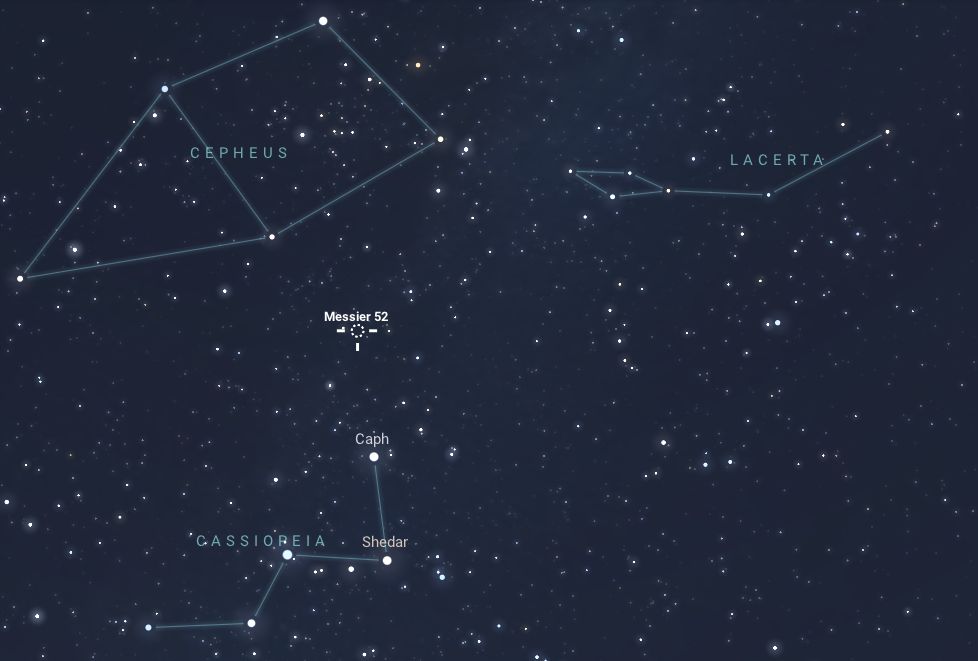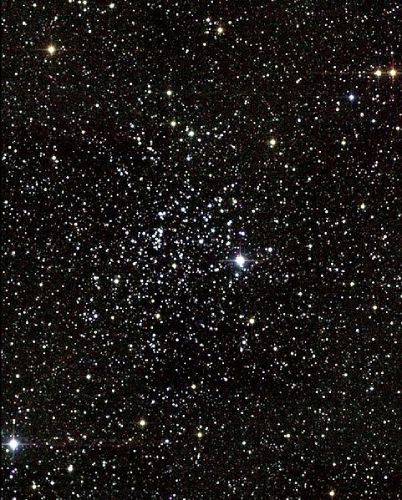Messier 52 (M52), also known as the Scorpion Cluster, is a compact open star cluster located in the constellation Cassiopeia. Positioned in the northern sky, this cluster is easily accessible to observers in the Northern Hemisphere and is popular for its brightness and rich stellar composition. With a distance of approximately 5,000 light-years from Earth, M52 resides in the Milky Way’s Perseus Arm.
Discovery
M52 was first observed by Italian astronomer Giovanni Battista Hodierna before 1654. More than a century later, it was included in Charles Messier’s catalogue of deep-sky objects in 1774, as Messier sought to compile a list of non-cometary objects to aid comet hunters in distinguishing between different celestial phenomena. M52, with its brightness and easily recognizable position in Cassiopeia, quickly became a favourite among astronomers who continue to study its properties and beauty.
Physical Characteristics
M52 is a moderately dense and compact open star cluster, containing several hundred stars that originated from the same molecular cloud. With an estimated age of around 35 million years, it is relatively young as far as open clusters go, meaning it still contains many bright, hot, blue stars on the main sequence. These youthful stars give M52 a bluish tint when viewed through telescopes, especially in contrast with older, more evolved stars that are more common in older clusters.
The cluster spans approximately 13 arc minutes, about one-third the apparent diameter of the full Moon, and has a rich, slightly irregular shape. Its stars are arranged somewhat unevenly, which adds to its charm when viewed through a telescope. The compact appearance and brightness of M52 make it resemble a small celestial “scorpion,” lending the cluster its nickname.
Observation
With an apparent magnitude of about 6.9, M52 is just below naked-eye visibility under typical dark-sky conditions. However, binoculars or a small telescope readily reveal its dense core and numerous stars. Under ideal conditions, the cluster’s brightest stars become apparent even through modest equipment, with binoculars providing a satisfying view and small telescopes revealing the cluster’s intricate structure and faintest members.

M52 is best observed from the Northern Hemisphere during autumn and winter months (September to December), when Cassiopeia is high in the evening sky. Prime viewing occurs in November and December, when the constellation is ideally positioned for night time observation. Located at right ascension 23h 24m and declination +61° 35′, M52 can be easily located using Cassiopeia’s prominent “W” shape and guided by a star chart or astronomy app.
Due to its accessibility and rich appearance, M52 is popular among amateur astronomers and astrophotographers alike. The cluster’s combination of young, blue stars and compact, irregular structure provides a striking contrast against the background sky, making it a rewarding object to observe and capture.



